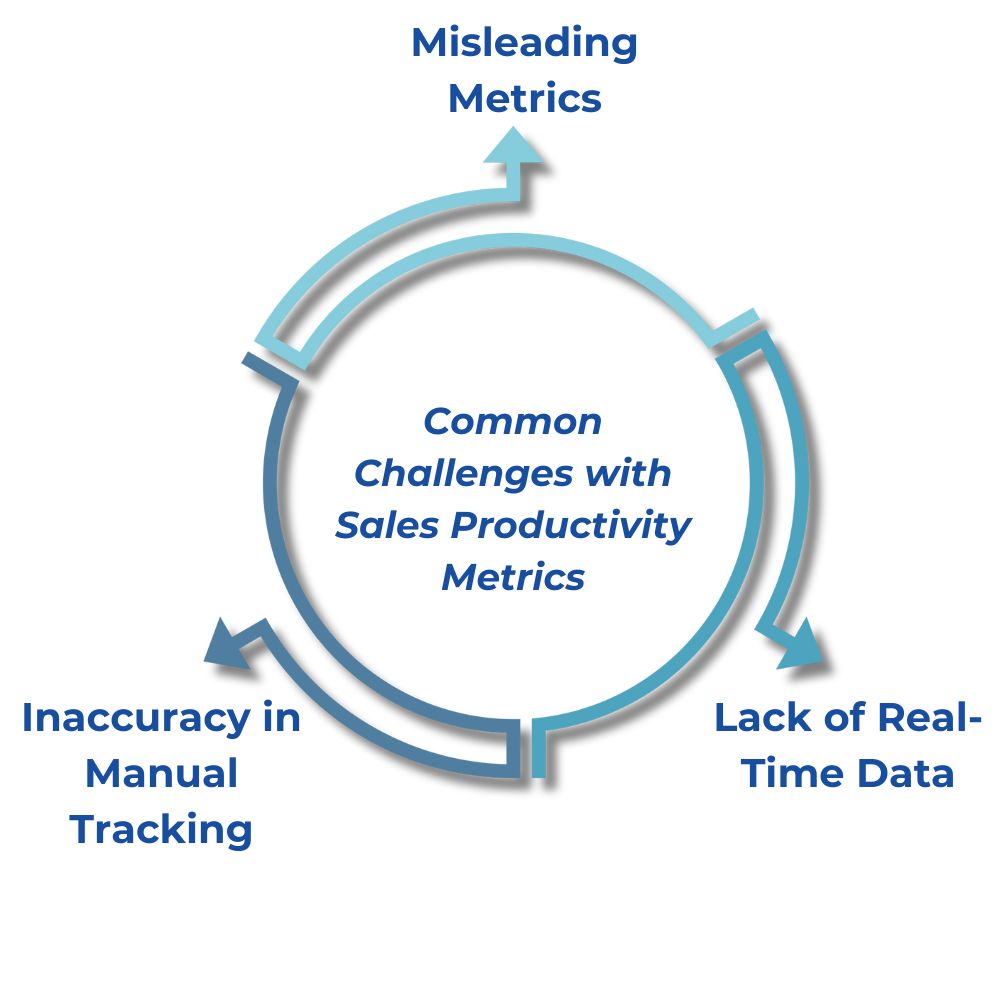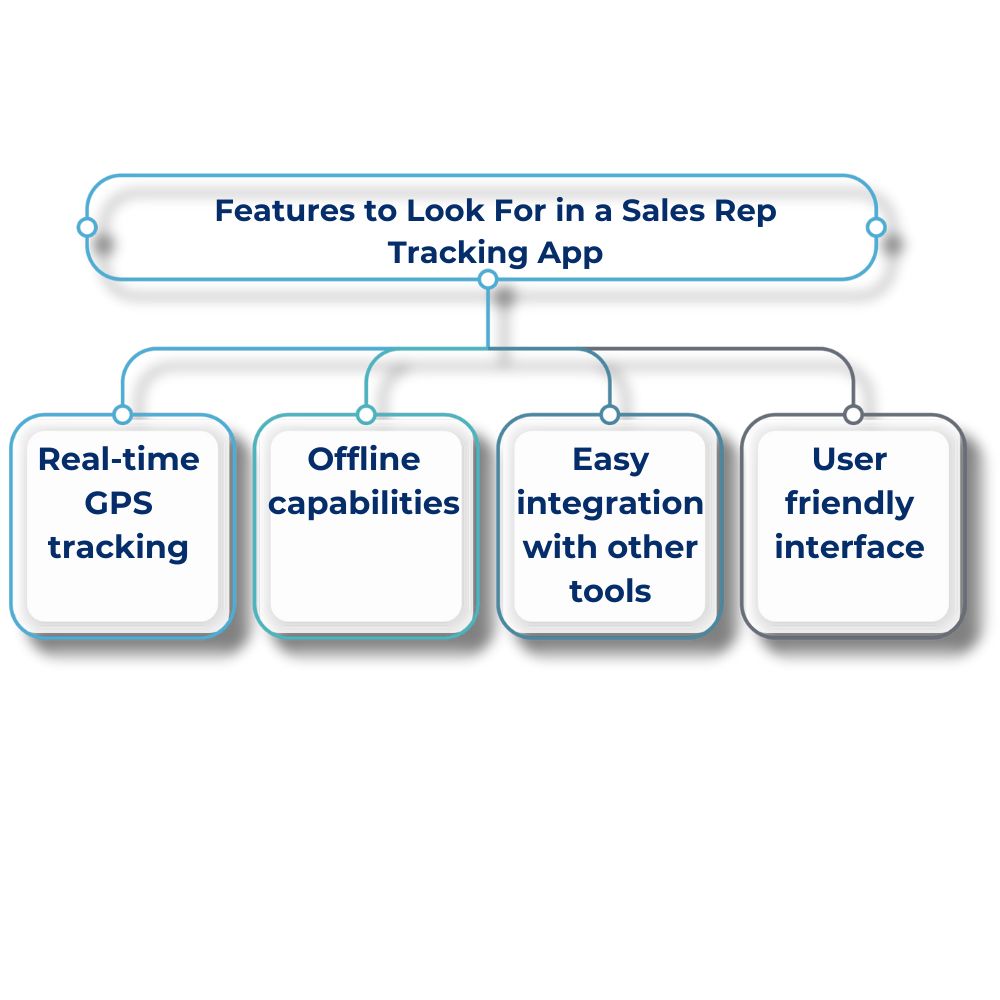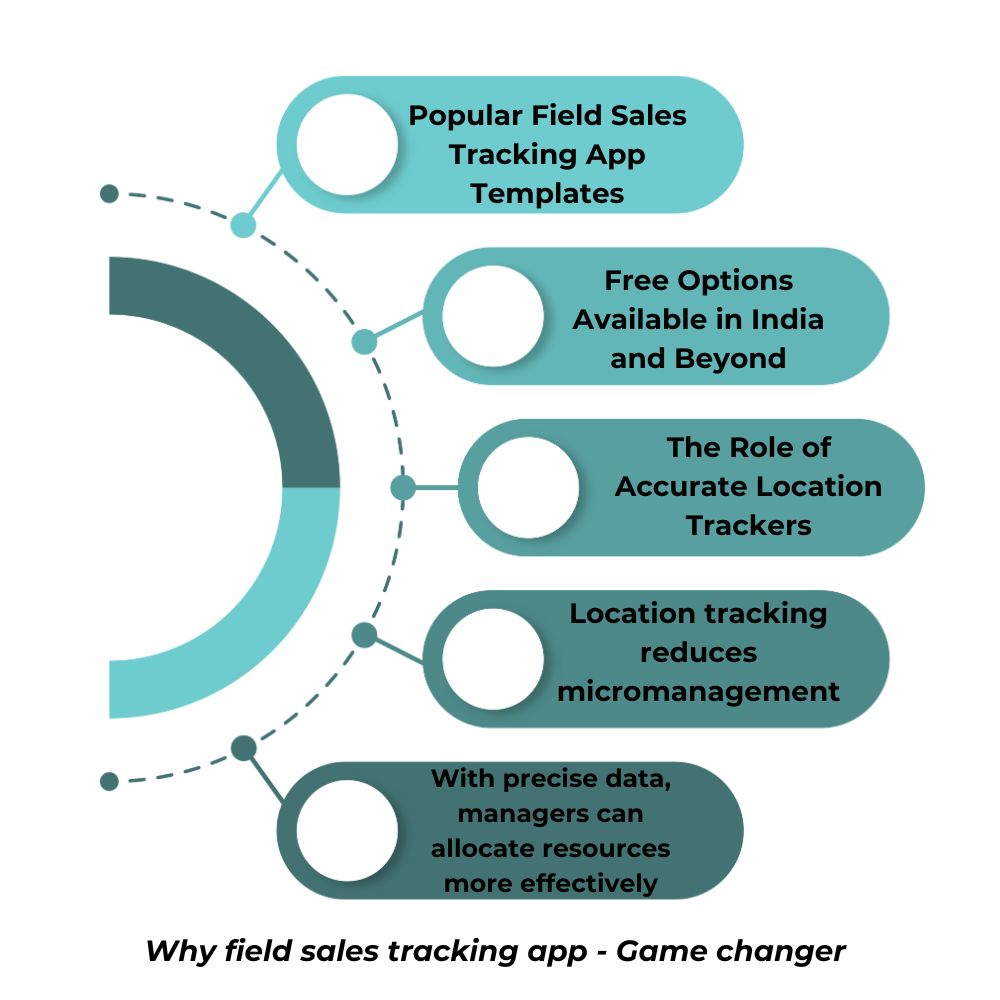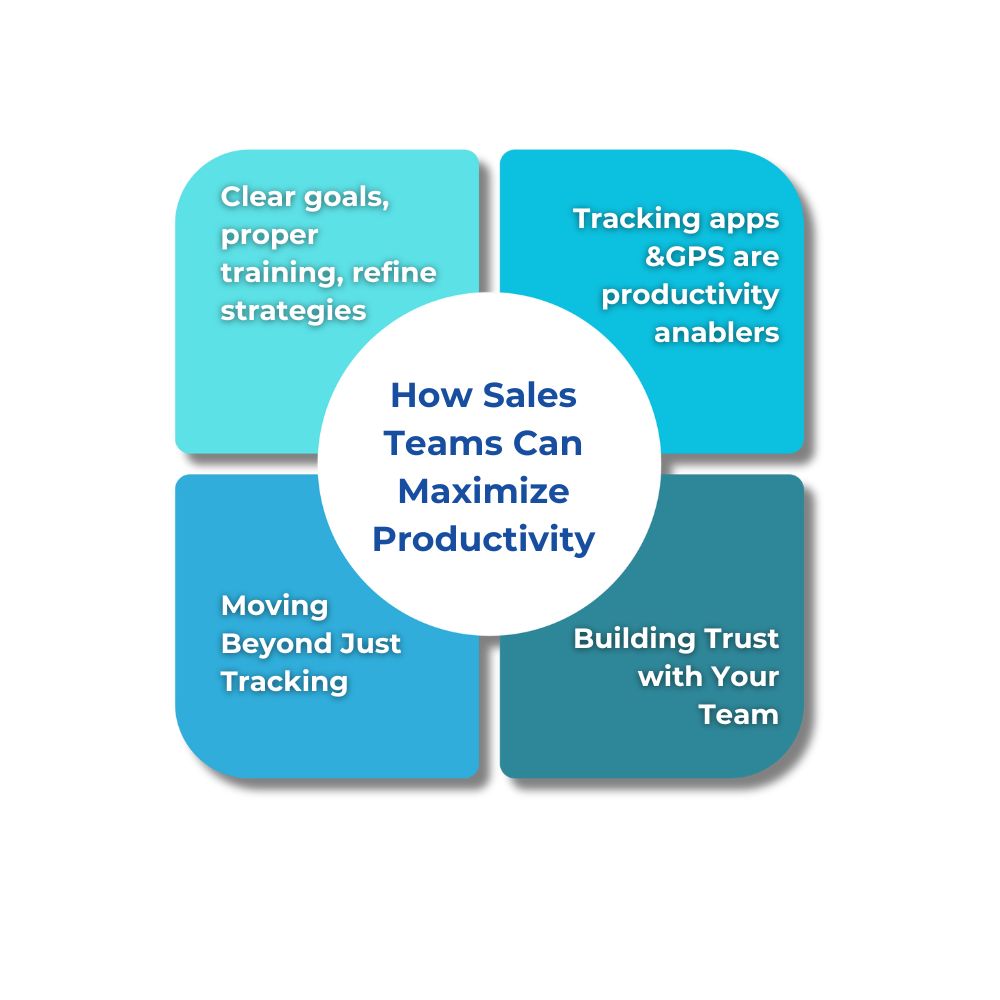- Breeze FSM
- 0 Comments
- 186 Views
Have you ever wondered why some sales teams hit their targets but still struggle to grow? The truth is, sales productivity metrics often don’t tell the full story. While they’re essential for measuring performance, these metrics can also be misleading, creating unnecessary pressure on sales teams. Understanding the hidden truths behind these numbers can make all the difference in building a successful, motivated team.
1.1 Why Sales Productivity Metrics Matter
Sales metrics are vital because they provide insights into how well your team is performing. From tracking deals closed to analyzing conversion rates, these numbers guide decision-making and highlight areas for improvement. But focusing solely on metrics without understanding their limitations can be a recipe for failure.
2.1 Definition and Overview
Sales productivity metrics are numerical indicators used to measure the efficiency and effectiveness of a sales team. Common metrics include revenue per salesperson, lead-to-customer conversion rates, and the average time to close a deal. These figures help managers evaluate performance and identify trends.
2.2 Key Metrics to Track
-
Revenue Per Salesperson: Measures individual contributions to the company’s bottom line.
-
Lead-to-Customer Conversion Rate: Tracks how effectively leads are being converted into paying customers.
Activity Metrics: Counts emails, calls, and meetings conducted by sales reps.
3.1 The Role of GPS in Field Sales Tracking
In field sales, location tracking is a game-changer. GPS-enabled sales team tracking apps allow managers to see where their team members are in real-time, ensuring accountability and efficiency.
3.2 How Location Data Drives Productivity
By analyzing location data, companies can optimize sales routes, reduce travel time, and prioritize high-value clients. With tools like a salesman location tracker, sales reps can spend less time on the road and more time closing deals.
4.1 Misleading Metrics
Not all metrics tell the full story. For example, a salesperson might meet their targets but fail to build lasting customer relationships. This disconnect between numbers and reality can hinder long-term growth.
4.2 Lack of Real-Time Data
Without real-time insights, managers rely on outdated information, making it harder to respond to challenges or opportunities effectively.
4.3 Inaccuracy in Manual Tracking
Manually tracking sales activities is prone to errors, leading to unreliable data and misplaced accountability.
5.1 How GPS Tracking Boosts Efficiency
GPS tracking for field sales offers unparalleled insights into a team’s daily activities. From identifying the shortest routes to ensuring timely client visits, this technology enhances overall productivity.
5.2 The Need for a Field Sales Tracking App
A reliable field sales tracking app makes it easy to collect accurate data, monitor performance, and streamline operations. Whether it’s a free field sales tracking app or a premium solution, the benefits are undeniable.
5.3 Benefits of GPS Tracking Field Sales
-
Improved Accountability
When sales reps know their movements are being tracked, they’re more likely to stick to schedules and meet targets.
-
Enhanced Route Optimization
Accurate location trackers help sales teams identify the most efficient routes, saving time and reducing costs.
5.4 Choosing the Right Sales Team Tracking App
5.4.1 Features to Look For in a Sales Rep Tracking App
-
Offline capabilities
-
Easy integration with other tools
5.4.2 Free vs. Paid Salesman Tracking Apps
While free apps like those available in India are great for small teams, investing in a premium app provides advanced features and scalability.
6.1 Why Metrics Can Be Deceptive
Metrics often focus on results, not the effort or challenges behind them. They can misrepresent performance, creating undue pressure on sales reps.
6.2 Balancing Numbers with Human Effort
To truly succeed, companies must combine metrics with an understanding of human effort, creativity, and emotional intelligence.
6.3 Real-Life Impact on Sales Teams
6.3.1 Stories from the Field
Imagine a sales rep driving hours daily, hitting their numbers but feeling undervalued. Their story highlights the need for empathetic leadership and tools that support—not monitor—effort.
6.3.2 The Emotional Toll of Chasing Numbers
When metrics overshadow human effort, sales teams can feel demotivated and burned out. It’s essential to balance accountability with recognition.
7.1 Popular Field Sales Tracking App Templates
Pre-built templates make it easy to customize apps for your team’s unique needs, ensuring seamless implementation.
7.2 Free Options Available in India and Beyond
For businesses on a budget, free apps offer a great starting point, especially in India, where several options cater to field sales teams.
7.3 The Role of Accurate Location Trackers
7.3.1 Benefits for Sales Employees
Accurate location tracking reduces micromanagement, empowering employees to focus on what they do best: selling.
7.3.2 How They Support Better Decision-Making
With precise data, managers can allocate resources more effectively, ensuring everyone works smarter, not harder.
8.1 Tips for Effective Tracking
-
Set clear goals for your tracking tools.
-
Provide proper training to your sales team.
-
Regularly review and refine your strategies based on data insights.
8.2 The Role of Technology
Sales team tracking apps and GPS-enabled tools are more than just monitors—they’re productivity enablers.
8.3 Empowering Sales Reps Through Transparency
8.3.1 Building Trust with Your Team
By using tracking tools transparently, you foster trust and collaboration, rather than suspicion or resentment.
8.3.2 Moving Beyond Just Tracking
Empower your team with tools that enhance their efficiency, not just monitor their activities.
9.1 Emerging Trends in GPS Tracking
With advancements in AI, sales tracking tools can now predict trends, optimize routes, and even suggest strategies for better client engagement.
9.2 Integrating AI for Better Insights
AI integration offers smarter data analysis, helping managers make informed decisions without being bogged down by numbers.
Sales productivity metrics are essential, but they’re only part of the equation. To truly empower your sales team, combine accurate data with empathy, trust, and the right tools. GPS tracking and field sales apps provide clarity and efficiency, but it’s the human connection that drives success.
1. What is the best sales tracking app for teams?
The best app depends on your needs, but GPS-enabled options with real-time tracking are highly effective.
2. How does GPS tracking improve sales productivity?
It optimizes routes, ensures timely client visits, and provides real-time accountability for sales reps.
3. Can tracking apps work offline?
Yes, many apps have offline capabilities, syncing data once connectivity is restored.
4. Are free tracking apps reliable?
Free apps are reliable for basic tracking but may lack advanced features required for larger teams.
5. How can I motivate my sales team beyond metrics?
Focus on transparent communication, recognize individual efforts, and invest in tools that support—not monitor—their work.
1. Introduction
Have you ever wondered why some sales teams hit their targets but still struggle to grow? The truth is, sales productivity metrics often don’t tell the full story. While they’re essential for measuring performance, these metrics can also be misleading, creating unnecessary pressure on sales teams. Understanding the hidden truths behind these numbers can make all the difference in building a successful, motivated team.
1.1 Why Sales Productivity Metrics Matter
Sales metrics are vital because they provide insights into how well your team is performing. From tracking deals closed to analyzing conversion rates, these numbers guide decision-making and highlight areas for improvement. But focusing solely on metrics without understanding their limitations can be a recipe for failure.
2. What Are Sales Productivity Metrics?
2.1 Definition and Overview
Sales productivity metrics are numerical indicators used to measure the efficiency and effectiveness of a sales team. Common metrics include revenue per salesperson, lead-to-customer conversion rates, and the average time to close a deal. These figures help managers evaluate performance and identify trends.
2.2 Key Metrics to Track
-
Revenue Per Salesperson: Measures individual contributions to the company’s bottom line.
-
Lead-to-Customer Conversion Rate: Tracks how effectively leads are being converted into paying customers.
-
Activity Metrics: Counts emails, calls, and meetings conducted by sales reps.
3. The Importance of Accurate Location Tracking
3.1 The Role of GPS in Field Sales Tracking
In field sales, location tracking is a game-changer. GPS-enabled sales team tracking apps allow managers to see where their team members are in real-time, ensuring accountability and efficiency.
3.2 How Location Data Drives Productivity
By analyzing location data, companies can optimize sales routes, reduce travel time, and prioritize high-value clients. With tools like a salesman location tracker, sales reps can spend less time on the road and more time closing deals.
4. Common Challenges with Sales Productivity Metrics
4.1 Misleading Metrics
Not all metrics tell the full story. For example, a salesperson might meet their targets but fail to build lasting customer relationships. This disconnect between numbers and reality can hinder long-term growth.
4.2 Lack of Real-Time Data
Without real-time insights, managers rely on outdated information, making it harder to respond to challenges or opportunities effectively.
4.3 Inaccuracy in Manual Tracking
Manually tracking sales activities is prone to errors, leading to unreliable data and misplaced accountability.

5. GPS Tracking in Field Sales
5.1 How GPS Tracking Boosts Efficiency
GPS tracking for field sales offers unparalleled insights into a team’s daily activities. From identifying the shortest routes to ensuring timely client visits, this technology enhances overall productivity.
5.2 The Need for a Field Sales Tracking App
A reliable field sales tracking app makes it easy to collect accurate data, monitor performance, and streamline operations. Whether it’s a free field sales tracking app or a premium solution, the benefits are undeniable.
5.3 Benefits of GPS Tracking Field Sales
-
Improved Accountability
When sales reps know their movements are being tracked, they’re more likely to stick to schedules and meet targets.
-
Enhanced Route Optimization
Accurate location trackers help sales teams identify the most efficient routes, saving time and reducing costs.
5.4 Choosing the Right Sales Team Tracking App
5.4.1 Features to Look For in a Sales Rep Tracking App
- Real-time GPS tracking
- Offline capabilities
- Easy integration with other tools
- User-friendly interface

5.4.2 Free vs. Paid Salesman Tracking Apps
While free apps like those available in India are great for small teams, investing in a premium app provides advanced features and scalability.
6. The Dirty Little Secret: Metrics Alone Don’t Tell the Full Story
6.1 Why Metrics Can Be Deceptive
Metrics often focus on results, not the effort or challenges behind them. They can misrepresent performance, creating undue pressure on sales reps.
6.2 Balancing Numbers with Human Effort
To truly succeed, companies must combine metrics with an understanding of human effort, creativity, and emotional intelligence.
6.3 Real-Life Impact on Sales Teams
6.3.1 Stories from the Field
Imagine a sales rep driving hours daily, hitting their numbers but feeling undervalued. Their story highlights the need for empathetic leadership and tools that support—not monitor—effort.
6.3.2 The Emotional Toll of Chasing Numbers
When metrics overshadow human effort, sales teams can feel demotivated and burned out. It’s essential to balance accountability with recognition.
7. Field Sales Tracking Apps: A Game-Changer
7.1 Popular Field Sales Tracking App Templates
Pre-built templates make it easy to customize apps for your team’s unique needs, ensuring seamless implementation.
7.2 Free Options Available in India and Beyond
For businesses on a budget, free apps offer a great starting point, especially in India, where several options cater to field sales teams.
7.3 The Role of Accurate Location Trackers
7.3.1 Benefits for Sales Employees
Accurate location tracking reduces micromanagement, empowering employees to focus on what they do best: selling.
7.3.2 How They Support Better Decision-Making
With precise data, managers can allocate resources more effectively, ensuring everyone works smarter, not harder.

8. How Sales Teams Can Maximize Productivity
8.1 Tips for Effective Tracking
- Set clear goals for your tracking tools.
- Provide proper training to your sales team.
- Regularly review and refine your strategies based on data insights.
8.2 The Role of Technology
Sales team tracking apps and GPS-enabled tools are more than just monitors—they’re productivity enablers.
8.3 Empowering Sales Reps Through Transparency
8.3.1 Building Trust with Your Team
By using tracking tools transparently, you foster trust and collaboration, rather than suspicion or resentment.
8.3.2 Moving Beyond Just Tracking
Empower your team with tools that enhance their efficiency, not just monitor their activities.

Read relevant topic – The beginner’s guide to sales force automation
9. The Future of Sales Productivity Metrics
9.1 Emerging Trends in GPS Tracking
With advancements in AI, sales tracking tools can now predict trends, optimize routes, and even suggest strategies for better client engagement.
9.2 Integrating AI for Better Insights
AI integration offers smarter data analysis, helping managers make informed decisions without being bogged down by numbers.
10. Conclusion
Sales productivity metrics are essential, but they’re only part of the equation. To truly empower your sales team, combine accurate data with empathy, trust, and the right tools. GPS tracking and field sales apps provide clarity and efficiency, but it’s the human connection that drives success.
11. FAQs
1. What is the best sales tracking app for teams?
The best app depends on your needs, but GPS-enabled options with real-time tracking are highly effective.
2. How does GPS tracking improve sales productivity?
It optimizes routes, ensures timely client visits, and provides real-time accountability for sales reps.
3. Can tracking apps work offline?
Yes, many apps have offline capabilities, syncing data once connectivity is restored.
4. Are free tracking apps reliable?
Free apps are reliable for basic tracking but may lack advanced features required for larger teams.
5. How can I motivate my sales team beyond metrics?
Focus on transparent communication, recognize individual efforts, and invest in tools that support—not monitor—their work.
Streamline, Optimize, and Succeed with BreezeFSM
- AI-powered Market Assistant
- Territory Mapping
- Activity Tracking
- Capturing and tracking leads
- Performance Insight



